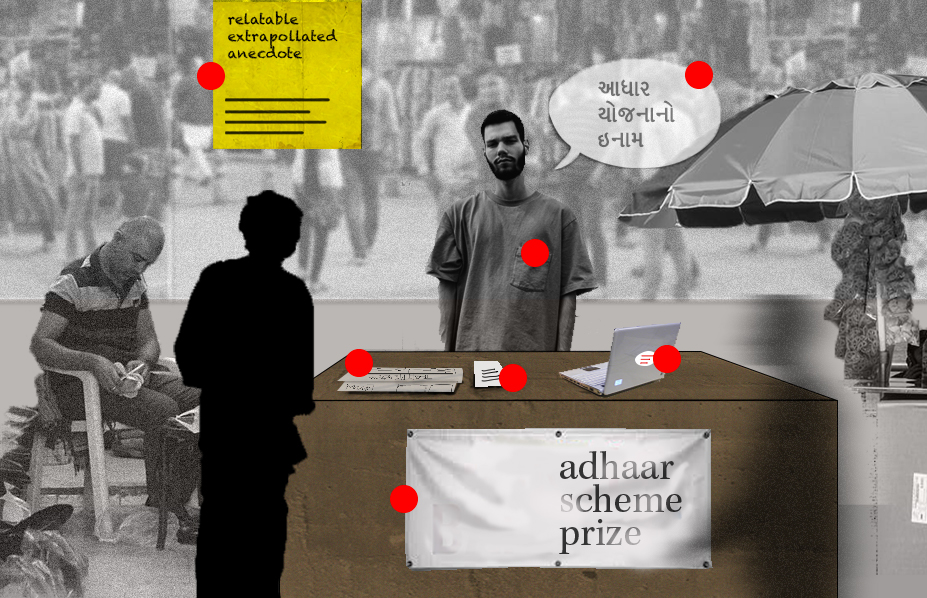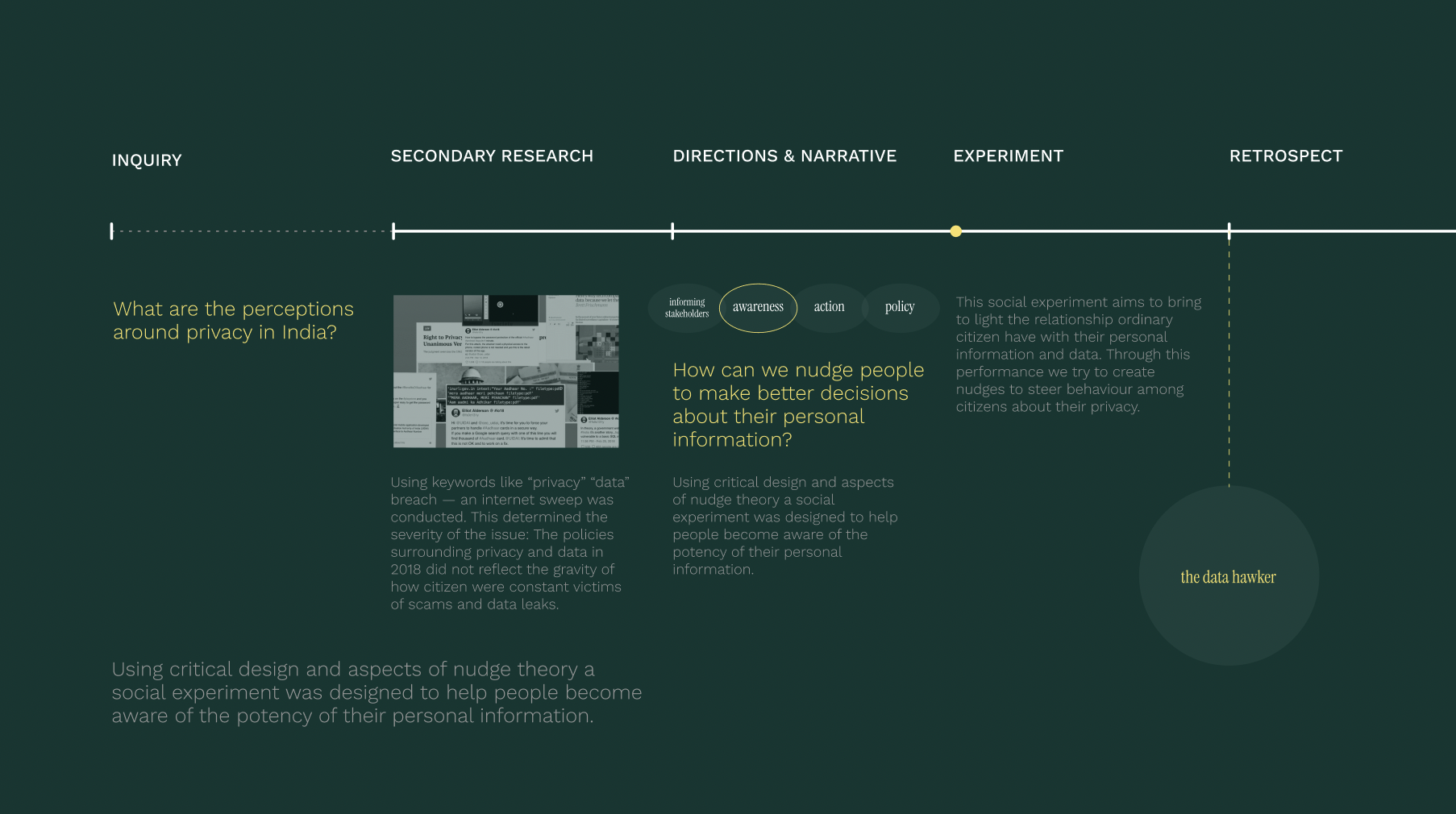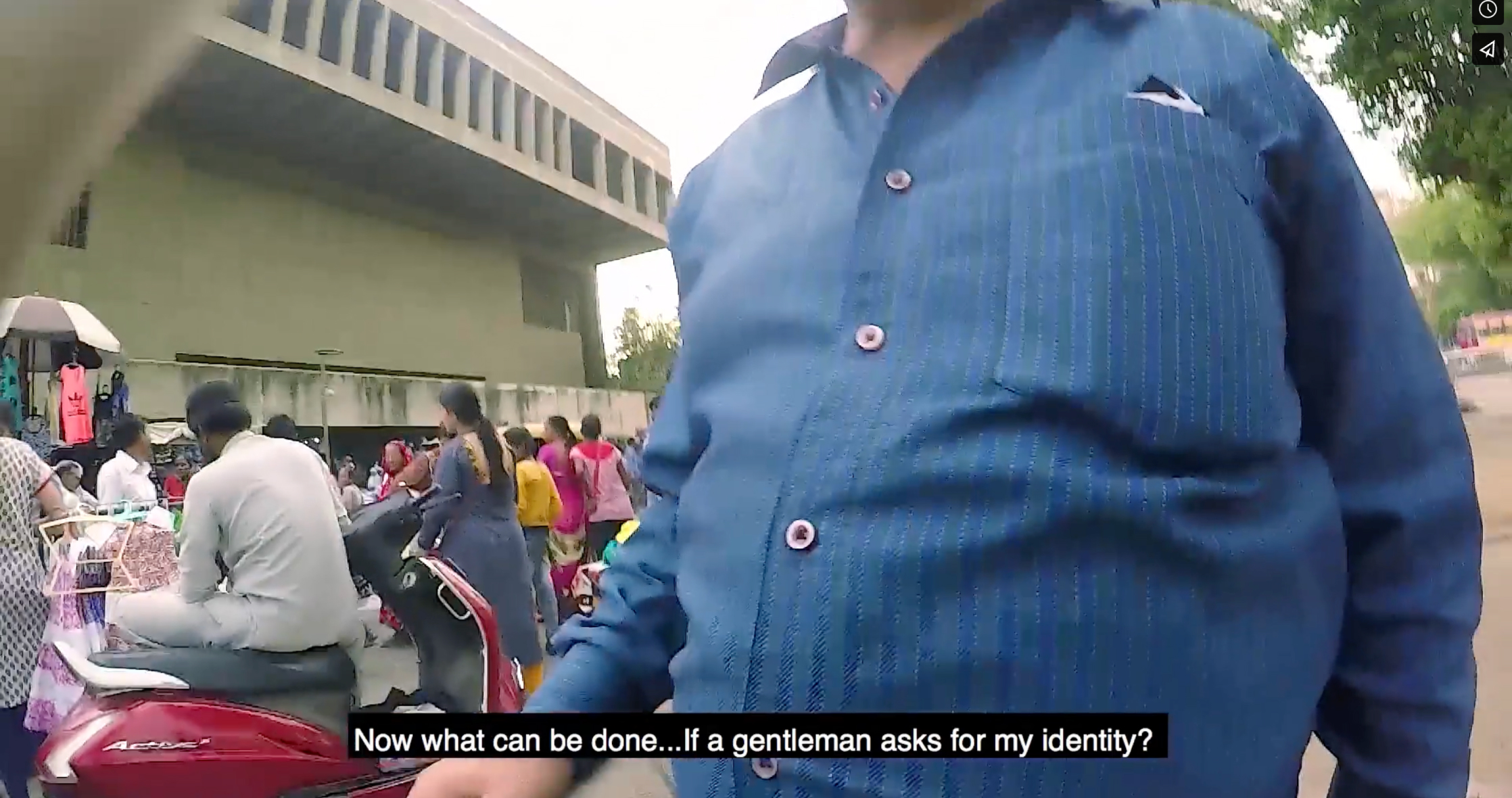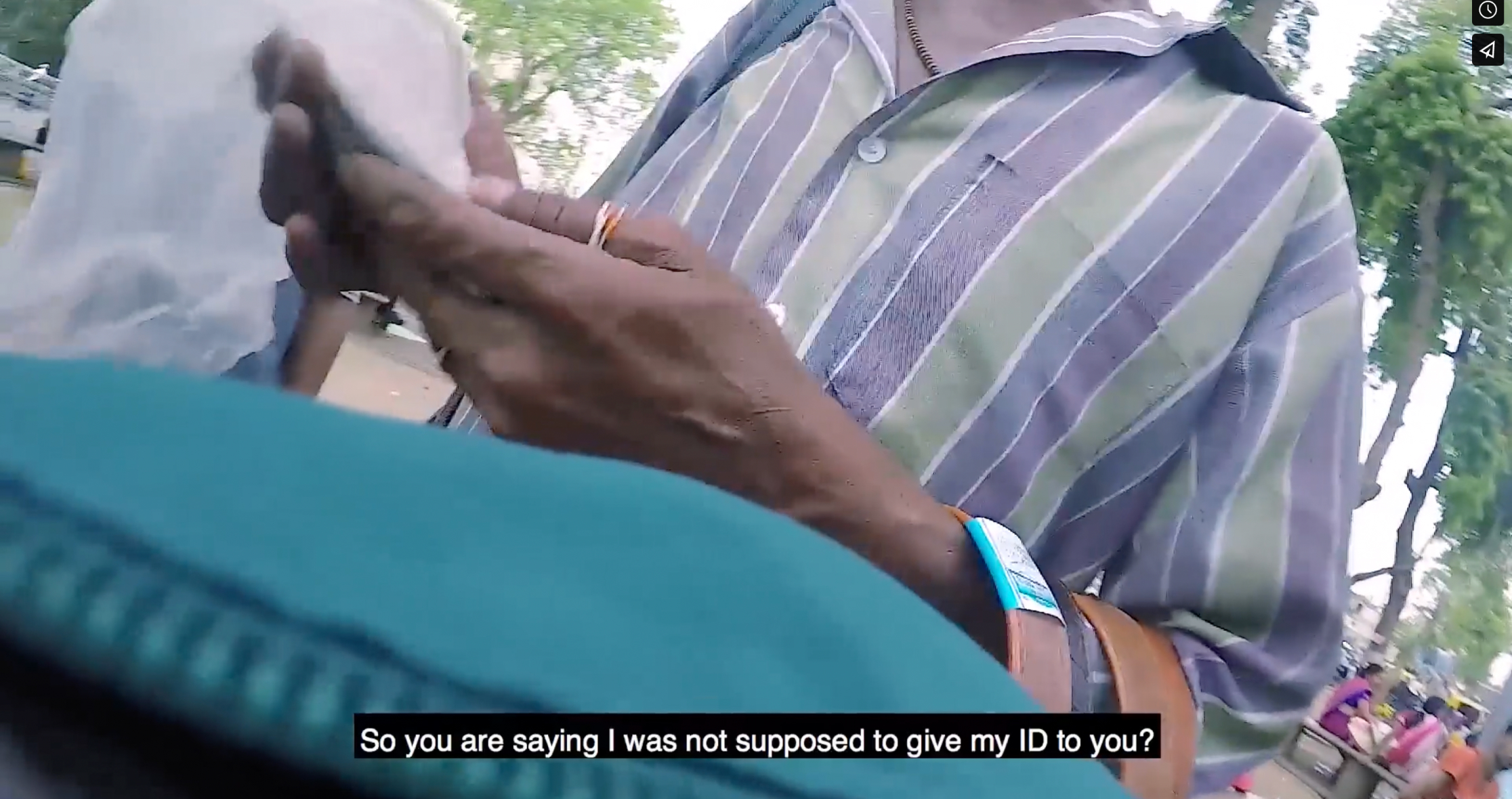‘Data Hawker’
The project aims to understand common perceptions of data privacy through a guerrilla experiment & nudges its participants to rethink their actions.
/ March 2018
/ INTERNET CULTURES X BEHAVIOUR
/ National Institute of Design, AHD
/ Advisor: Tanishka Kachru
DESIGN RESEARCH ︎ SOCIAL EXPERIMENT ︎ NARRATIVE DESIGN ︎ CRITICAL DESIGN ︎ VISUAL COMMUNICATION ︎ DESIGN RESEARCH ︎ SOCIAL EXPERIMENT ︎ NARRATIVE DESIGN ︎ CRITICAL DESIGN ︎ VISUAL COMMUNICATION ︎ DESIGN RESEARCH ︎ SOCIAL EXPERIMENT ︎ NARRATIVE DESIGN ︎ CRITICAL DESIGN ︎ VISUAL COMMUNICATION ︎
Case Study ︎
7 min read
Aadhaar, the Unique Identification System based on biometric data, has been heavily criticised by activists and officials alike. The major concern with Aadhar for activists is the ease with which its privacy can be breached and data, harvested.
This social experiment aims to bring to light the relationship ordinary citizen have with their personal information and data. Through this performance I try to create nudges to steer behaviour among citizens about their privacy.
But the bigger question is, whose the onus is the protection of privacy on, law makers or unassuming citizens?
The Experiment
In this piece, I invited passerbys to share their proof of identification with the team to enter a lucrative (fake) lottery. In this process, I discovered people’s relationship with their personal information. The film is a slice of this experiment.
We set up this stall in the very busy street market of Ahmedabad in Teen Darwaza.
In this process many passerby’s took keen interest in what the stall had to offer. The ones who gave into the scheme, were quickly sent over to the art director of the performance, who would explain to them, what just happened, this was creating a loop in behaviour change.
Watch the short clip to see the social experiment in action.
In this process many passerby’s took keen interest in what the stall had to offer. The ones who gave into the scheme, were quickly sent over to the art director of the performance, who would explain to them, what just happened, this was creating a loop in behaviour change.
Watch the short clip to see the social experiment in action.
 Fig: Collaterals of Make-belief with ‘Red Flags’
Fig: Collaterals of Make-belief with ‘Red Flags’The Experience
I created deliberate ‘red flags’ throughout the experiment in the hopes that our participants would identify them.
We told our participants that if they want to sign up for the lottery, they must share their ID proof 🚩️, in most cases their Aadhaar card. (the government of India had issued various kinds of notices to not share one’s info)
This led to the next step, we would show them ads and pamphlets of the lottery to convince the participants– these were all of course, fake and photoshopped. 🚩️ There were deliberate mistakes here 🚩️ and an experiment disclaimer.
If participants ignored all these red flags and proceeded to share their personal information with us, they were sent into a second feedback loop. Here, they were told about what just occurred. They were also made aware through anecdotes what would happen in a different scenario if malicious actors were in play.
This led to the next step, we would show them ads and pamphlets of the lottery to convince the participants– these were all of course, fake and photoshopped. 🚩️ There were deliberate mistakes here 🚩️ and an experiment disclaimer.
If participants ignored all these red flags and proceeded to share their personal information with us, they were sent into a second feedback loop. Here, they were told about what just occurred. They were also made aware through anecdotes what would happen in a different scenario if malicious actors were in play.
The Process





